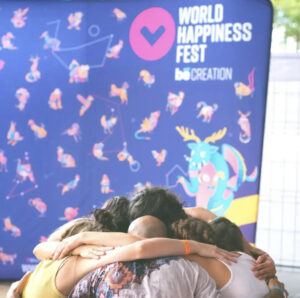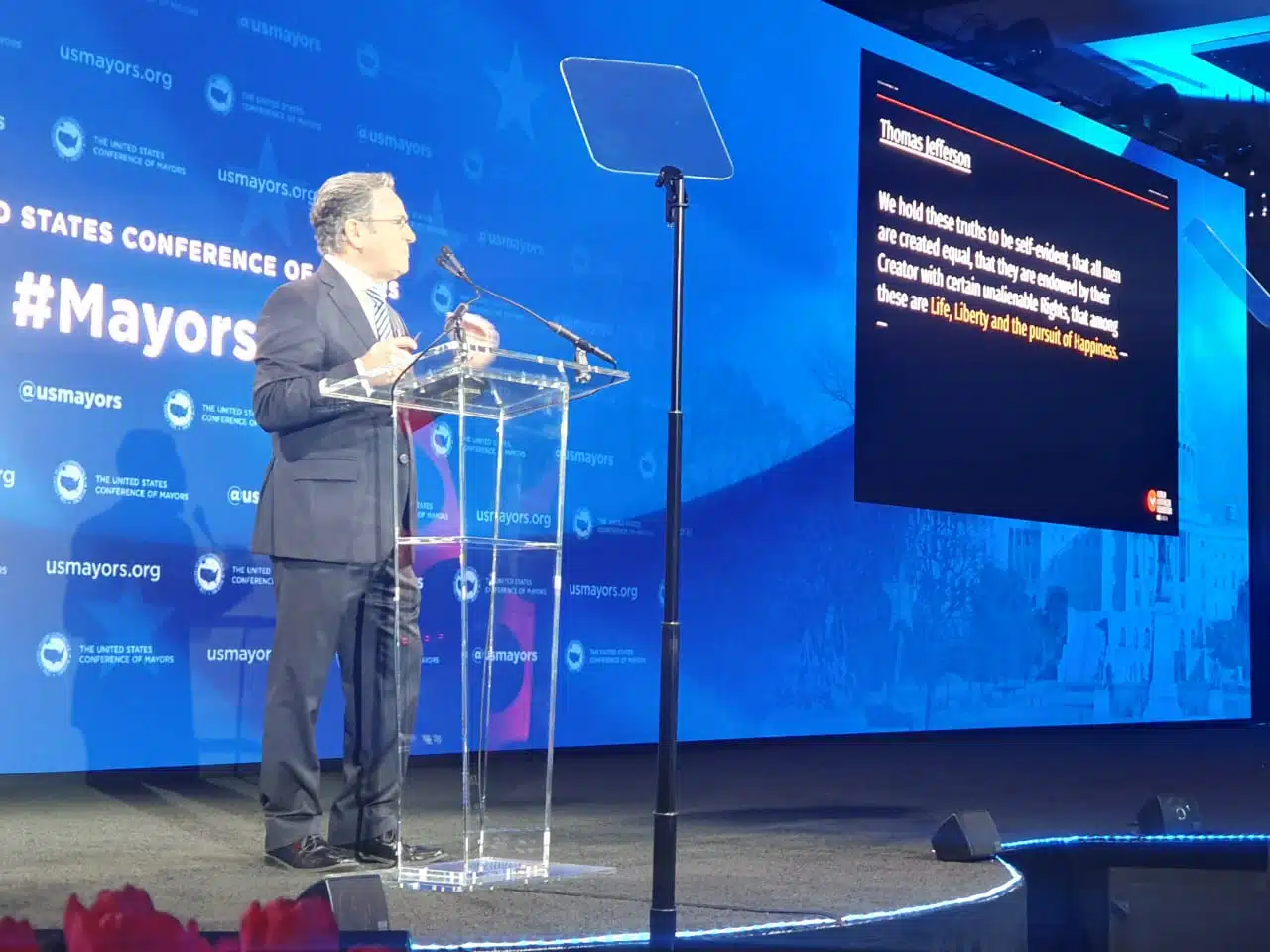
World Happiness Foundation Position on SDG 17: Global Unity and Collective Action
Fostering a Global Family United by Abundance and Purpose. At

Over half the world’s population—about 4.2 billion people (55%)—live in urban areas today, and by 2050 this is projected to reach 7 in 10 people globally. Cities drive over 80% of global GDP and concentrate opportunity, innovation, and services. Yet rapid urbanization brings steep challenges: nearly 1 billion people reside in informal settlements lacking basic services, 90% of urban residents breathe polluted air (causing 4.2 million annual deaths), and cities produce over 70% of greenhouse emissions. The United Nations’ Sustainable Development Goal 11 (SDG 11) – “Make cities inclusive, safe, resilient and sustainable” – targets these critical issues, from housing and transport to green space and air quality. Traditionally, the SDG framing focuses on fixing deficits (e.g. reducing pollution, eliminating slums), reflecting what some call a scarcity mindset. While essential, this problem-centric approach can imply cities are competing over scarce resources and merely trying to eliminate negatives. The World Happiness Foundation (WHF) advocates a complementary, abundance mindset for SDG 11: one that emphasizes co-creating positive outcomes – flourishing communities, well-being, and joy – rather than simply fighting urban problems.
Happytalism, a paradigm championed by WHF founder Luis Miguel Gallardo, asks us to reimagine development as a journey toward shared prosperity and happiness, not a zero-sum struggle. In this view, cities are not just engines of economic growth or service delivery, but powerhouses for human well-being and connection. By reframing our goals in terms of what we want to cultivate – happiness, health, belonging, harmony with nature – we unlock new possibilities for urban transformation. This is the spirit behind “Happy & Harmonious Communities,” the World Happiness Foundation’s reframing of SDG 11. Rather than merely measuring success by fewer urban ills, we measure it by the abundance of well-being our cities create.
Goal 11: Happy & Harmonious Communities is a positive reimagining of SDG 11 through the lens of happytalism. It means designing cities and communities for human happiness and ecological harmony. In practical terms, urban planning should prioritize green spaces, social connection, arts and culture, and accessible well-being services, so that neighborhoods become “hubs of joy, belonging, and sustainability”. This shifts the emphasis from just building infrastructure to nurturing quality of life. We envision cities where parks, community gardens, and clean air are abundant; where public spaces encourage neighbors to meet and bond; where cultural vibrancy and inclusive services make every resident feel a sense of belonging and purpose. The abundance mindset embedded in happytalism suggests that we already have (or can create) the resources and knowledge to achieve this – from innovative technology to age-old community wisdom.
Crucially, a happytalist approach to SDG 11 complements its original targets. While SDG 11 calls for inclusivity, safety, resilience, and sustainability, Happy & Harmonious Communities provide the why behind those targets – we strive for sustainable cities not only to fix problems, but to enable every person to thrive. For example, affordable housing isn’t just a metric; it’s a means to stability and peace of mind for families. Efficient public transport isn’t just about mobility; it gives back time for people to connect with loved ones and reduces stress. Green urban planning isn’t only to cut pollution; it fosters serenity, recreation, and a bond with nature. By reframing SDG 11 in terms of happiness and harmony, we encourage city leaders to ask “How does this policy impact our people’s well-being?” at every step. This aligns with emerging global thinking: the 2025 Smart City Expo in Curitiba, Brazil explicitly adopted the slogan “transforming cities, building happiness”, reflecting a new consensus that urban innovation must be human-centered and promote well-being. In short, making a city sustainable is not an end in itself – the end goal is happier, healthier communities living in balance with the environment.
Cities profoundly shape our quality of life. They magnify humanity’s greatest strengths – innovation, culture, social diversity – but also its stresses. Research shows that on balance, city dwellers often report slightly higher life satisfaction than their countries’ averages, thanks to better services, jobs, and social opportunities. At the same time, urban ills like congestion, crime, and pollution can erode day-to-day happiness. In fact, the happiest cities in the world – frequently found in places like Scandinavia, New Zealand, or Canada – tend to be those combining economic vitality with strong social support, trust in institutions, safe environments, and access to nature. Conversely, cities plagued by conflict, instability, or severe inequality rank lowest in well-being, reinforcing that peace and good governance are fundamental to happiness. These insights affirm that how we build and govern our cities directly impacts whether people thrive or suffer.
The World Happiness Foundation believes cities can be intentional catalysts for happiness by integrating well-being into their core missions. This means expanding the definition of a “successful city” beyond GDP or infrastructure metrics to include happiness indicators. Encouragingly, this shift is underway. For example, Dubai pioneered a real-time “Happiness Meter” system to continuously gauge residents’ satisfaction with city services, feeding into a dashboard that officials use alongside economic data. The intent is clear: if a transit service or public policy change causes a drop in happiness, city leaders can respond as urgently as they would to a spike in traffic or crime. Likewise, global networks are emerging to share best practices. City leaders at forums like the United States Conference of Mayors and Smart City Expo are increasingly discussing mental health, community engagement, and joy as key urban outcomes, not mere afterthoughts. There is growing recognition that SDG 11’s targets (housing, transport, green space, etc.) are deeply interconnected with well-being – achieving them can make people happier, and happy citizens in turn invest more in their communities’ sustainability. As the World Happiness Report research noted, continuously monitoring and improving city dwellers’ quality of life is “an important step towards implementing Sustainable Development Goal 11”. In other words, happiness is not a fluffy extra, but a powerful compass for urban development.
Translating the vision of Happy & Harmonious Communities into action, the World Happiness Foundation launched the Cities of Happiness Initiative (CHI) – an innovative program to help cities embed happiness and well-being into municipal governance. Rather than relying only on traditional top-down planning, this approach starts with listening to citizens about what truly matters to their happiness. Each community is encouraged to adopt a “Wheel of Happiness and Well-Being” framework covering all facets of life – from health and mental wellness to social relationships, education, environment, good governance and cultural vitality. In practical terms, participating cities conduct extensive community engagement (surveys, town halls, focus groups) to identify local happiness drivers and pain points. They then align city plans, budgets, and services with these priorities.
To illustrate, a city’s happiness wheel might include dimensions such as: physical and mental health, safety and security, environmental quality, social connection and belonging, civic engagement, lifelong learning, cultural expression, and financial stability. Using this holistic lens, city officials can evaluate every project by asking, “How will this affect our residents’ well-being in these dimensions?” For example, adding a new bus line is not just a transport upgrade; it’s evaluated for its impact on stress (mental health), time use (social/family connection), and air quality (environmental health). Key performance indicators might include residents’ life satisfaction, sense of community, trust in local government, usage of parks, or participation in cultural events – tracked via surveys and smart data tools alongside economic stats. This data-driven yet human-centric approach marks a new standard: a city is only as successful as the happiness of its people. By explicitly safeguarding joy, freedom, and well-being in policy, local leaders foster communities that are not just livable, but truly thriving.
One pioneering example is the Village of Pinecrest in Florida, which in 2024 became the first U.S. municipality to implement WHF’s Cities of Happiness framework. Pinecrest’s journey shows how a city can operationalize Goal 11’s ideals through happytalist principles. The village kicked off its “Happy Pinecrest People Initiative” by engaging over 350 residents via workshops, 30+ focus groups, and surveys to crowdsource a vision of a happier community. Residents’ voices revealed several key happiness drivers that map closely to SDG 11 targets:
Armed with these insights, Pinecrest effectively created a “Happiness Dashboard” for the city. The baseline findings were enlightening. On the one hand, overall happiness levels were high – about 73.5% of residents described themselves as happy or very happy. Social capital was a clear strength: an impressive 90% felt emotionally close to family or friends, reflecting tight-knit bonds. On the other hand, gaps emerged that mirror global urban issues. Only 52% of residents were satisfied with local mental health initiatives, highlighting a need for better support and reduced stigma around mental illness. Environmental contentment was strong yet came with caveats: 92% of people cherished Pinecrest’s parks and green spaces, but many urged improvements in recycling, tree planting, and invasive species control to boost sustainability. Likewise, while residents felt safe and proud of their community, newer families in areas with big lots noted it was harder to meet neighbors – spurring calls for more community events and public gathering spots. These granular data points gave Pinecrest a compass for action: where residents were already thriving (close social ties), the city could build on it; where there was discontent (mental health resources, environmental programs), the city now had a mandate to act.
What makes Pinecrest’s approach powerful is how quickly it translated data into tangible changes. City leaders embraced a mindset that every department – from parks to policing – shares responsibility for well-being. In response to the findings, Pinecrest launched new initiatives across each dimension of happiness:
By aligning these actions with the Wheel of Happiness dimensions, Pinecrest ensured that each strategy targets a specific well-being outcome, from reducing loneliness to preserving natural beauty. Notably, many solutions blend high-tech and human touch. For instance, the village is exploring a gamified mobile app for citizens to provide feedback or flag community needs in real time (leveraging the smart-city tech ethos). Yet, they pair this with face-to-face initiatives like neighborhood circles, recognizing technology is no substitute for human connection. This balanced approach exemplifies how a city can be both “smart” and deeply humane.
Early results are promising. Pinecrest’s happiness-centric model is already influencing budgeting and governance: the mayor and council now evaluate every new project or policy by its impact on residents’ quality of life, not just its cost or efficiency. As Pinecrest Mayor Joseph Corradino put it, “By prioritizing well-being in our policies and programs, we are building a more resilient and happier future for everyone”. He noted that Pinecrest’s commitment is not only to improve local life but to “serve as a model for communities around the world”. Indeed, Pinecrest is setting a global precedent – showing that even a small community (population ~19,000) can innovate in governing for happiness, and inspiring other towns and cities to follow suit. After Pinecrest’s success, interest in the Cities of Happiness approach has surged. Other municipalities – from small villages to major metros – are reaching out to the World Happiness Foundation to learn how they too can become a “City of Happiness.” The core lesson from Pinecrest is universal: when cities co-create solutions with their citizens, focusing on what brings people joy, comfort, and belonging, the entire community flourishes.
The World Happiness Foundation’s position on SDG 11 goes beyond any single city – it calls for a global movement of Happy & Harmonious Communities. This movement is built on collaboration, knowledge-sharing, and mutual inspiration. Unlike traditional city rankings or “happiness competitions” that pit locales against each other, WHF fosters a network of villages, towns, and cities that learn together and uplift one another. The idea is that a rising tide of well-being lifts all ships: we want every community to become happier and more sustainable, and that happens faster when cities cooperate rather than compete. Through WHF’s Public Policy Forum and partnerships, mayors and urban planners around the world are now exchanging best practices on boosting well-being – whether it’s Pinecrest sharing how they run mental health outreach in schools, or a city in Scandinavia sharing how they design bike-friendly, green neighborhoods.
This cooperative spirit was on display at the recent United States Conference of Mayors, where WHF President Luis Miguel Gallardo presented the Cities of Happiness program to leaders from hundreds of cities. The message resonated: “The pursuit of happiness starts in our cities”. Mayors discussed how focusing on happiness can unify various city agendas – economic development, public health, safety, inclusion – under a common vision of thriving citizens. Importantly, happiness-driven development also aligns with other global initiatives: for example, the Wellbeing Economy Alliance (WEAll) and several national governments (New Zealand, Scotland, Bhutan, etc.) are pushing beyond GDP to measure success in well-being and environmental health. Cities are the next frontier in this revolution. Already, many local governments conduct citizen satisfaction surveys; the next step is integrating those into a continuous happiness index, much like Pinecrest and Dubai have done.
International institutions are taking note too. The OECD and UN-Habitat have advocated for “people-centered cities,” and the World Happiness Report now provides a global urban happiness ranking as a benchmark. Those rankings reveal that cities with inclusive governance, social trust, and ample green space consistently score highest in life satisfaction. This validates WHF’s emphasis on freedom, trust, and ecological harmony as pillars of happy communities. Meanwhile, grassroots movements in cities – from “Happy City” design labs to mental health coalitions – are sprouting everywhere, showing a hunger for this new paradigm. We see cities appointing Chief Happiness Officers, building “mindfulness parks,” or launching community co-working hubs to reduce loneliness. Each experiment adds to our collective knowledge of what works. By sharing these ideas openly, a small innovation in one city can spark a chain reaction worldwide.
Ultimately, the World Happiness Foundation’s stance is that SDG 11 will be truly fulfilled not when we simply have sustainable cities, but when we have joyful, inclusive, and compassionate cities. Achieving that requires reimagining urban development as a joyful endeavor of co-creation. It means city leaders, businesses, and citizens working hand-in-hand to cultivate what Gallardo calls “Fundamental Peace” – a state of society where freedom, consciousness, and happiness for all is the north star. The abundance mindset teaches us that there is no finite quota of happiness; one city’s success does not come at the expense of another’s. In fact, happiness multiplies through sharing. When one community finds a new way to connect neighbors or reduce anxiety, it freely shares the template, and all can benefit. In a world facing climate change, pandemics, and social fragmentation, this collaborative approach is not just idealistic – it’s pragmatic. We can solve problems faster and better by infusing them with purpose and positivity.
The World Happiness Foundation’s position on SDG 11, Happy & Harmonious Communities, is a call to elevate our ambitions for our cities. It asks us to imagine urban neighborhoods where happiness is as important a metric as housing or income – and then to make it a reality through smart policy and heartfelt community building. By embracing an abundance mindset, we shift from a narrative of urban scarcity (“not enough affordable homes, not enough parks…”) to a narrative of possibility (“how might we design every neighborhood to enable flourishing?”). Pinecrest’s example shows that even with modest resources, a city can start this transformation today by listening to its people and acting on what makes life worth living. Every park built, every mental health counselor hired, every community festival hosted is a step toward a city where people wake up smiling and feel they belong.
In the coming years, as urbanization continues, the stakes are high – but so is our potential to improve billions of lives by getting SDG 11 right. A city that is inclusive, safe, resilient, and sustainable (the original SDG 11 vision) is also, by definition, a city poised to maximize happiness. Our position is simply to be intentional about that final outcome. Don’t just build green transport – build it so that it brings people joy and connection. Don’t just plan housing – create homes and vibrant communities. The SDGs gave us a roadmap to survival; happytalism gives us a compass for thrival. When we design cities for human well-being and ecological harmony, we address today’s urgent needs and plant seeds for a more caring, joyous future. It is a future where cities large and small form a global tapestry of Happy & Harmonious Communities – each unique in culture and context, yet united by the shared goal of freedom, consciousness, and happiness for all citizens. By collaborating across borders and learning from each other, we can make that vision real. The World Happiness Foundation invites city leaders, partners, and everyday citizens everywhere to join this movement. Together, in the spirit of happytalism, we can transform our urban environments from places of mere living into incubators of prosperity, purpose, and inner peace for everyone.
Sources: World Happiness Foundation – Beyond Scarcity: Happytalism for Abundance; Pinecrest Cities of Happiness Report; World Happiness Report (2020) on Cities & Well-Being; Pinecrest Initiative News; WHF Blog – From Smart Cities to Happiness; United Nations Urbanization Data.

Fostering a Global Family United by Abundance and Purpose. At

Introduction: Nature as Our Extended Family Life on land (United

Introduction: Our Blue Planet at a Crossroads Oceans cover over